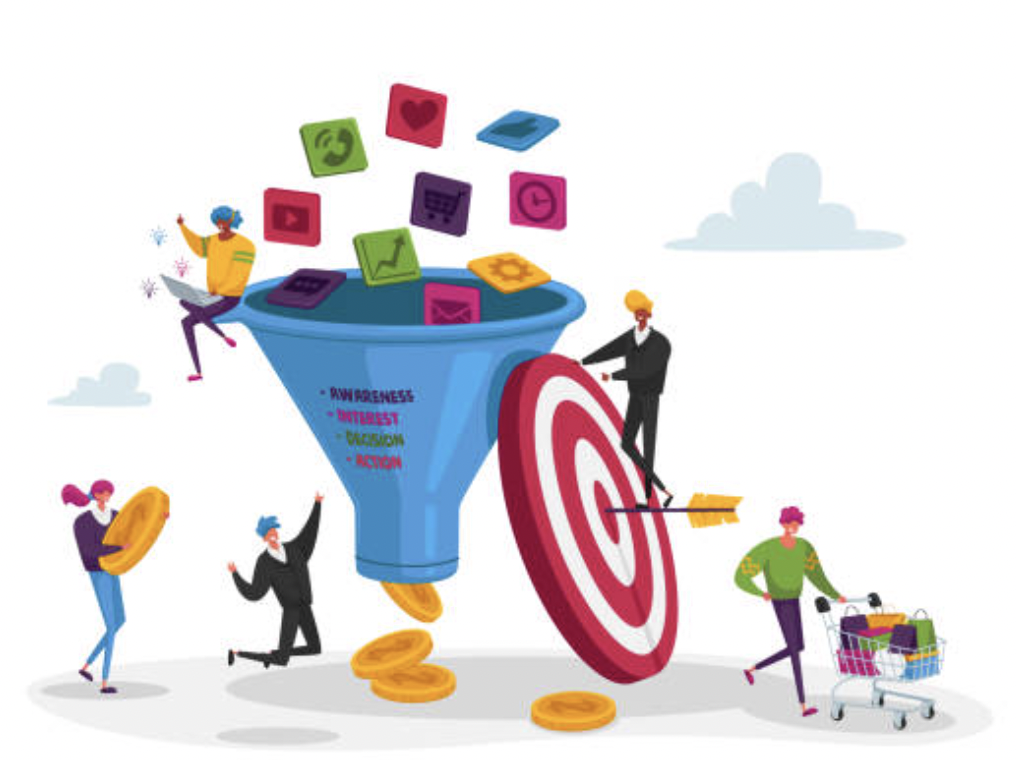Product-Led Growth: A New Approach to Product Success
I’m sure you’ve heard “a product that sells itself” many times. This is an oft-used expression when product-led growth is being talked about, but it still doesn’t give enough insight into what needs to be done.
And that’s exactly why this post was born: to explain what product-led growth precisely means and how you can embrace it.
Whether you’re a company considering moving from traditional methods to product-led strategies or you want to learn more about what it entails, this article will shed some light on product-led growth (PLG) marketing and how you can make it work for you.
Product Led Growth Explained
Product-led growth is a business methodology that uses the product as the primary tool to acquire, retain and attribute revenue. In this growth model, the sales teams do not lead the process. Instead, sales and marketing teams are positioned to allow the product to take the lead.
Companies like Dropbox and Slack achieved much targeted success quickly with this method, which is one of the many reasons why it has become so popular in the SaaS industry.
Often at the core of their PLG strategy is a free-to-try option that allows them to evaluate the product without contacting a salesperson. This helps enable users to make their own purchasing decisions. You can configure what users will try for free in different ways. For example, you can:
- Provide a limited-featured version of your product (a freemium product) for free
- Create an interactive live demo that will let them see what they can do with your product
- Provide a trial version for a limited time that will allow them to understand the true power of your product

For PLG marketing strategies to be successful, it is necessary to pay attention to the following types of criteria as much as possible:
- You should adopt a product-oriented approach as a company
- You should have correctly identified your product’s value proposition and brand position.
- You should analyze and make sense of the product’s data and feedback based on users’ needs. You should base the data resulting from this interpretation on the following product development-marketing action plans.
- You should create a strong content strategy that explains to users how the product will meet their needs and expectations and determine which channels you will share this content through. You should also track and analyze the interactions of your content.
- You should focus on and improve the customer experience as much as possible.
How Does Product Led Growth Differ From Traditional Methods of Marketing?
Product-led growth allows you to create a convenient and consistent experience for every user. Every user accesses the same features of the product and benefits from the same freemium or demo. This allows you to improve the product constantly and optimize the product based on data according to your target audience.
Another way in which product-led growth strategies differ from their traditional counterparts is that you don’t need the guidance of a sales team at every single step of the user journey. . This makes product-led marketing less costly than traditional sales-led marketing.
One traditional marketing method, called sales-led growth, includes contact-based and personalized growth strategies. In some industries, customers may need help getting started or talking to a sales representative. In such a case, product-led growth will not be effective.
Similarly, traditional growth methods will be more effective when selling to large companies with strict compliance rules. This is because you need salespeople to ensure that customers’ questions are answered properly and to find the right decision makers and negotiate contracts.
So, it really boils down to the industry you’re based in, the kind of product you’re selling, and what your target audience looks like.
What Are the Benefits of PLG Marketing?
The PLG marketing approach provides your company with many distinct advantages. Some of these advantages are:
#1 Higher retention rate
Focusing directly on the end user and offering your users a product they can easily access and experience helps them quickly discover the value you’re offering. This makes it easier to retain your users and allows you to increase your retention rate in less time.

But remember, your main focus in this process should always be to improve your product in a user-centric way, as your product will be the main driver behind your retention rates. Focusing on always bringing out the best product will help you keep increasing your retention rates.
#2 Wider top of the funnel

Product-led growth strategies offer users a portion of the product directly, allowing them to experience the product at the beginning of the transformation process. This attracts many leads to your product and increases quality leads at the top of the funnel (TOFU).
This method allows users to get the most benefit from the product in the shortest time with the least risk. Therefore, acquiring leads with product-led growth strategies in SaaS companies is much easier than other methods.
#3 Quicker time to value

Product-led growth companies deliver instant value to their users. They can access your product features, experience a demo of your software, or download a trial version without going through long sales cycles. This process shortens the time to value considerably. This allows you to adapt to the fast-paced world of modern software sales.
In a dynamic industry like the SaaS industry, your potential users don’t have time for multiple sales calls. Reaching the “aha moment” as soon as possible by experiencing your product will encourage them to buy quickly.
#4 Lower customer acquisition cost (CAC)
Product-led companies develop their growth strategies through methods such as freemium or trial. You don’t need a salesperson for these methods. Therefore, PLG companies need less workforce to convert customers, which means less cost.
In addition, it’s easier to sell globally because your growth and sales strategy are tied to a product, not a team. You can sell simultaneously worldwide without requiring different sales teams in different time zones. This results in a lower overall customer acquisition cost.
Is PLG Marketing Right For You?
Product-led growth is a viable approach for many companies, especially in the SaaS industry. Most customers now expect a seamless and personalized customer experience, whether or not it involves spending hours with sales personnel. PLG marketing is one of the most effective ways to meet users’ expectations, as it has an approach that puts the product at the heart of the entire sales cycle and is based on selling the product itself.
However, product-led growth is not tailor-made for every company. Especially senior executives or some government agencies prefer to work with a sales team during the purchasing process. Product-led growth strategies will make your job more challenging if you are a B2B company working with such decision-makers.
In addition, you must be very careful when transitioning to product-led growth strategies if you manage this process with a free version. Before doing this, thoroughly calculate and test how many of your current paying users will switch to the free plan. Otherwise, the strategies you hope to accelerate your growth may be against you.
How Can Technology Assist You in Product-Led Growth?
There are many factors and metrics that product-led companies need to monitor and analyze to manage their growth processes. That’s why a product-led business needs powerful analytics tools in its growth process.Analytics tools can be used to track product metrics that allow you to determine which feature of your product your users interact with the most and which feature they are having trouble with. In addition, these tools will enable you to monitor the stage at which most of your users decide to convert or drop off. Thus, you can shape your product to convince the maximum number of users to sell. A powerful analytics tool will make it easier for you to develop your product and accelerate the growth of your product-led company.

With detailed dashboards, analytics and attribution tools like HockeyStack allow you to track and analyze every sales and product metric you need to monitor with the product-led approach. For example, with HockeyStack, you can see which feature has higher engagement, track your session per user rate, and see how many of your users have converted from the free version to the paid version.
Moreover, you can monitor all these metrics in the same dashboard, creating more value when analyzed together. Hockeystack’s clear and relevant data visualizations are essential for your product-led growth strategies to be effective.
After many companies found success with their product-led marketing strategies, the popularity of PLG has increased. It may seem tempting to swap your current business strategies with product-led growth strategies in such an industry where so many companies have found success in doing so. However, as with any method, this methodology has its pros and cons which you need to consider before making a decision.
That said, whether or not you’re going forth with a product-led approach, you should constantly monitor the process and analyze your product and ensure that it’s aligned with the needs of the user. Tracking the right metrics will make it easier for you to improve your product according to the expectations of users. Thus, you will be more successful by increasing your sales and user satisfaction.
FAQ
A product-led is an approach that is centered on the product. A product-led growth strategy relies on the product’s features and performance to make sales.
In product-led growth, companies rely on product usage and customer experience to gain new customers. In this approach, you put your product at the center of the operation and determine it as your primary customer acquisition approach. This method is most suitable for SaaS businesses with self-service or transactional products. On the other hand, market-led growth focuses on the importance and needs of customers. It is based on extensive market research.



